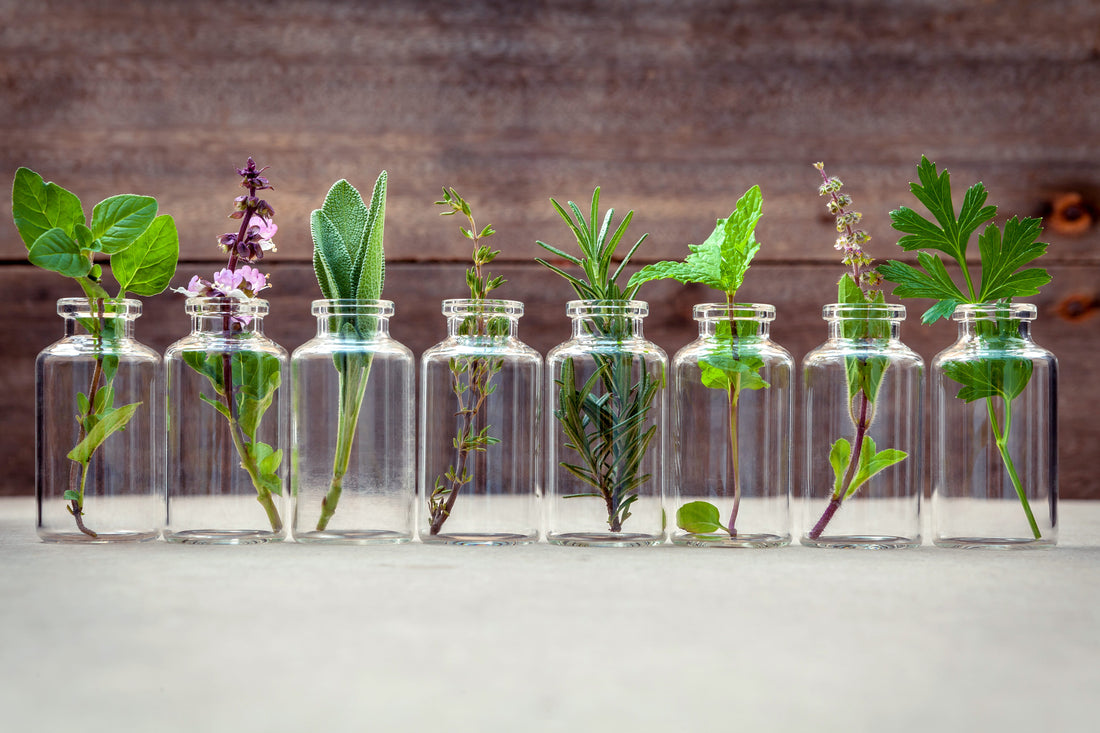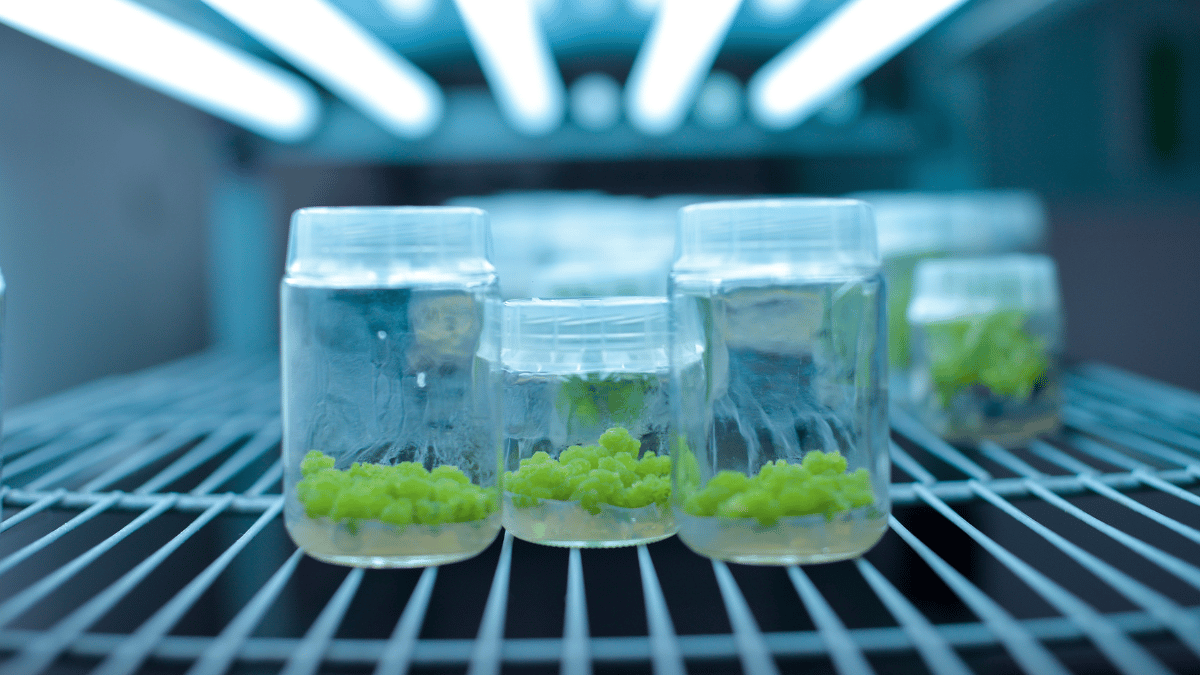
Everything to Know About Culturing Medicinal Plants
As a content and community manager, I leverage my expertise in plant biotechnology, passion for tissue culture, and writing skills to create compelling articles, simplifying intricate scientific concepts, and address your inquiries. As a dedicated science communicator, I strive to spark curiosity and foster a love for science in my audience.


Getting Started: Medicinal Plants
Do you want to break into medicinal plant tissue culture but you have no idea about what it is and how it’s done? Not to worry!! Because we’ve heard you and brought you full packed information on tissue culture of medicinal plants!
We all have heard the stories of plants being used as medicine to treat an ailment. In the absence of any modern medicines in the ancient world, plants have been the major source of medicines. The strong evidence for the same can be obtained from ancient written records, like Ayurveda which talks about the benefit of thousands of plants and their parts to treat ailments including skin diseases, digestive problems, liver disorders, or arthritis. Today, approx 80% of the population of developing countries and 25%-30% of the population of developed countries are using these herbal medicines for their primary health care system.
“Secondary Compounds” in Plants
The vital use of plants as herbal medicines is due to the secondary compounds present in them. These compounds play a key role in plants’ survival and proliferation in the natural environment by acting as defense compounds against any invading pathogens. The secondary compounds also act as attractants for pollinators that help in the reproduction of plants.
Secondary Compounds Usage in our Life
The secondary compounds are valuable components of pharmaceuticals and nutraceuticals, flavors, dyes, fragrances, and pesticides. Given below is a list of compounds with their plant source and the disease they treat.
| S. No. | Compounds | Plant source | Use |
| 1. | Taxol | Taxus brevifolia | Anti-cancer drug to treat breast, ovary, and lung cancer |
| 2. | Artemisinin | Artimisia annua | Anti-malarial |
| 3. | Ajmalicine | Catharanthus roseus | Anti-tumor |
| 4. | Ginkgolide | Ginkgo biloba | Neuroprotective |
| 5. | Lithosperimic and rosmaric acid | Salvia miltiorrhiza | Antioxidant and Improve vascular and blood system |
The extensive use of medicinal plants for these purposes has imposed a great threat to the conservation of natural resources and endangered plant species. Here, tissue culture technology plays a major role. It’s the only solution to fulfill the rigorous demands of the population.
How secondary compounds are produced and extracted from plants in bulk?
Tissue culture is an indispensable tool of plant biotechnology. It has potential applications in mass production of plants, hybrid plant production, haploid plant production, conservation of endangered species, etc. Plant tissues are cultured for propagation in a liquid medium or solidifying agar (or gellan gum) medium. And, for the mass production of secondary compounds, a liquid medium is a popular choice. It’s because they provide uniform cultural conditions, support rapid growth, and feasible for large-scale productions.
Two-stage culture process
The composition of the medium must be optimized for specific cell lines and manufacturing processes. Every component of the medium affects cell growth and secondary metabolite accumulations in different ways. It may be possible that a component promoting cell growth has an adverse effect on the medicinal compounds’ (or secondary compounds) accumulation.
Concerning this, the tissue culture processes for medicinal plants are designed in two stages:
- First stage: Optimized for maximum cell growth and proliferation.
- Second stage: Maximum secondary metabolite accumulation.
Bioreactors
Tissue culture is utilized by companies to produce and extract secondary compoundsfrom different parts of the plants in bioreactors. The process is quite similar to microbial fermenters.
The bioreactors provide suitable environments to cultured tissues for their proper growth and development. It can be done without the limitations of natural factors such as geographical location and seasonal variation. Moreover, the cultural conditions can also be optimized to enhance the overall productivity of the cultures. Plant tissue culture in bioreactors is a cost-effective and sustainable process for the mass production of medicinal compounds.
What kind of bioreactor can be used for this process?
A small amount (10-100 ml) of cultures are maintained in Erlenmeyer flasks on shaking incubators (called shake-flask). But, in this case, cells start aggregating/accumulating which leads to slow growth and lower productivity due to poor nutrient transfer. The aggregates can form in different sizes-- from a few cells to a few hundred cells. For this reason, bioreactors are used for the mass production of active compounds from the cell suspension.
The two most commonly used bioreactors used for this purpose are:
- Agitated and aerated stirred tank bioreactors: In this system, a rotating impellor (a machine component) generates mechanical agitation that suspends the cells, disperse the air bubbles from an aerator, and properly mixes the fluid. The agitation simply leads to good mass and heat transfer throughout the culture system that promotes uniformity and healthy maintenance of cells.
- Air-lift bioreactors: Unlike stirred bioreactors, these bioreactors use air sparging (injecting pressurized air in the machine) for agitation and aeration. No rotor is involved in these machines for this purpose. Air-lift bioreactors consume less-energy and are more flexible but they are less-effective for dense cultures.
Other than the cell suspension technique, medicinal plants are also cultured through somatic embryogenesis, shoot tip, or axillary bud culture. These techniques produce high-quality virus-free and disease-resistant seedlings for large-scale field plantation. Often, the micropropagation techniques are combined with other biotechnology tools to enhance the productivity or output of the cultures.
That’s all about the tissue culture of medicinal plants. If there is something that you want us to write or talk about then do let us know at anjali@plancelltechnology. We are in a continuous effort of crafting useful and educational content for you. So, we will be delighted to hear anything from you!!
Happy culturing!!

References
- Zhou, L. G., & Wu, J. Y. (2006). Development and application of medicinal plant tissue cultures for production of drugs and herbal medicinals in China. Natural Product Reports, 23(5), 789. doi:10.1039/b610767b
- Pant, B. (2014). Application of Plant Cell and Tissue Culture for the Production of Phytochemicals in Medicinal Plants. Infectious Diseases and Nanomedicine II, 25–39. doi:10.1007/978-81-322-1774-9_3
- https://www.ncbi.nlm.nih.gov/pmc/articles/PMC378676/pdf/jbacter01100-0091.pdf
- https://www.ncbi.nlm.nih.gov/pmc/articles/PMC71931...
- https://www.researchgate.net/publication/267683689...
Blog Categories
View by Level
Popular Blogs

Callus Culture: Definition and Applications
Introduction Tissue culture is not just one technique! Yes, you heard right! As you know, tissue culture is an advanced...
Read More
6 Plant Tissue Culture Books to Keep Learning
Introduction Most of us are fans of books when it comes to learning a topic in detail and in a...
Read MoreSubscribe to Our Newsletter








Join the conversation
Your email address will not be published. Required fields are marked